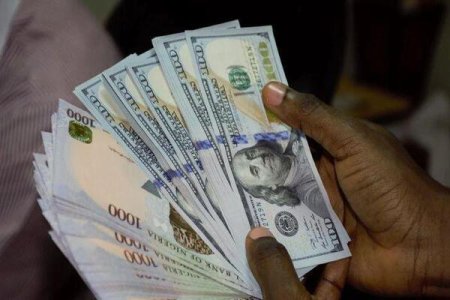
The Nigerian Naira has seen a significant appreciation, reaching N1,350 per dollar in the parallel market from N1,430 just a day prior. Similarly, in the Nigerian Foreign Exchange Market (NAFEM), the Naira climbed to N1,382.95 per dollar, marking a notable increase from the previous day's rate of N1,408.04 per dollar, according to data from FMDQ.
This surge has widened the margin between the parallel market rate and the NAFEM rate to N32.95 per dollar, up from N21.96 per dollar previously. Over the past month alone, the Naira has experienced an impressive 18.28 percent surge, rising from its low of N1,665.50 recorded on February 23, 2024, as reported by FMDQ Securities Exchange.
The driving force behind this unprecedented appreciation can be attributed to recent foreign exchange reforms implemented by the Central Bank of Nigeria (CBN). These reforms encompass a range of measures aimed at consolidating exchange rate windows, liberalizing the FX market, and resolving FX backlog obligations for banks and airlines.
Key initiatives include the implementation of a Price Verification System (PVS), the imposition of limits on banks’ Net Open Position, and the restructuring of the Bureau De Change (BDC) segment. Additionally, the CBN has removed margin limits for International Money Transfer Operator (IMTO) remittances and introduced a two-way quote system to foster stability and transparency in the forex market.
Notably, the CBN sold dollars to Bureau De Change (BDC) Operators at a rate of N1,251, with directives for the BDCs to sell to eligible customers at a rate not exceeding 1.5 percent above the purchase price. These measures underscore the CBN's commitment to promoting a market characterized by active participation and equitable pricing dynamics.
While the recent surge in the Naira's value offers a glimmer of optimism for Nigeria's economic outlook, questions linger regarding the sustainability of this upward trajectory. As stakeholders closely monitor developments, the nation remains poised for further shifts in its financial landscape, guided by ongoing reforms and the ever-evolving dynamics of the global economy.



![Today's Naira Rate [27-04-2024]: Nigeria's Naira Bounces Back Strong, Hits 1,280 Against Dollar](/data/attachments/203/203376-fac0fa1defd2c5f3b205505ee482c7dc.jpg)
